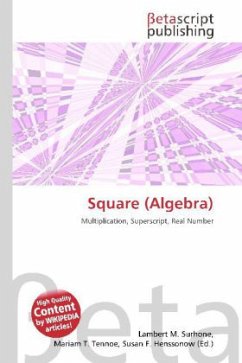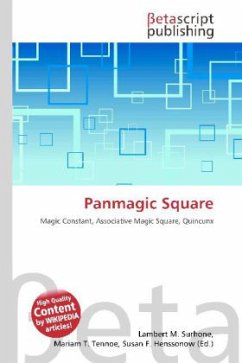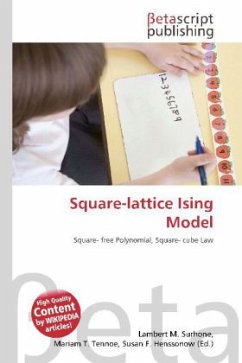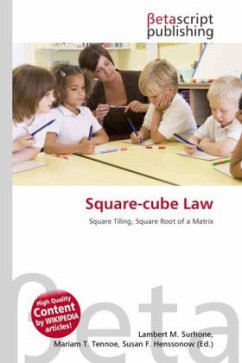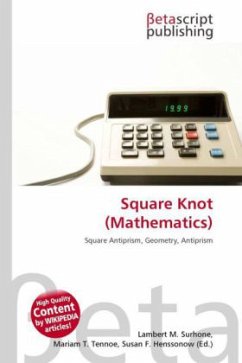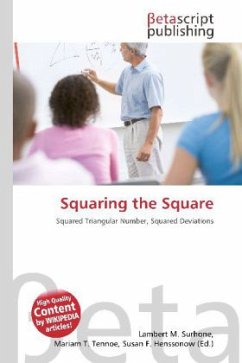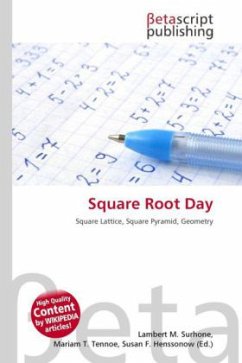Please note that the content of this book primarily consists of articles available from Wikipedia or other free sources online. In algebra, the square of a number is that number multiplied by itself. To square a quantity is to multiply it by itself. Its notation is a superscript "2"; a number x squared is written as x2. Thus: If x is a positive real number, the value of x2 is equal to the area of a square of edge length x. A positive integer that is the square of some other integer, for example 25 which is 52, is known as a square number, or more simply a square. The square of any nonnegative integer n can be represented as the sum 1 + 1 + 2 + 2 + ... + (n 1) + (n 1) + n. For instance, the square of 4 or 42 is equal to 1 + 1 + 2 + 2 + 3 + 3 + 4 = 16. This is the result of adding a column and row of thickness 1 to the square graph of three (like a tic tac toe board). You add three to the side and four to the top to get four squared. This can also be useful for finding the square of a large number quickly.
Bitte wählen Sie Ihr Anliegen aus.
Rechnungen
Retourenschein anfordern
Bestellstatus
Storno

